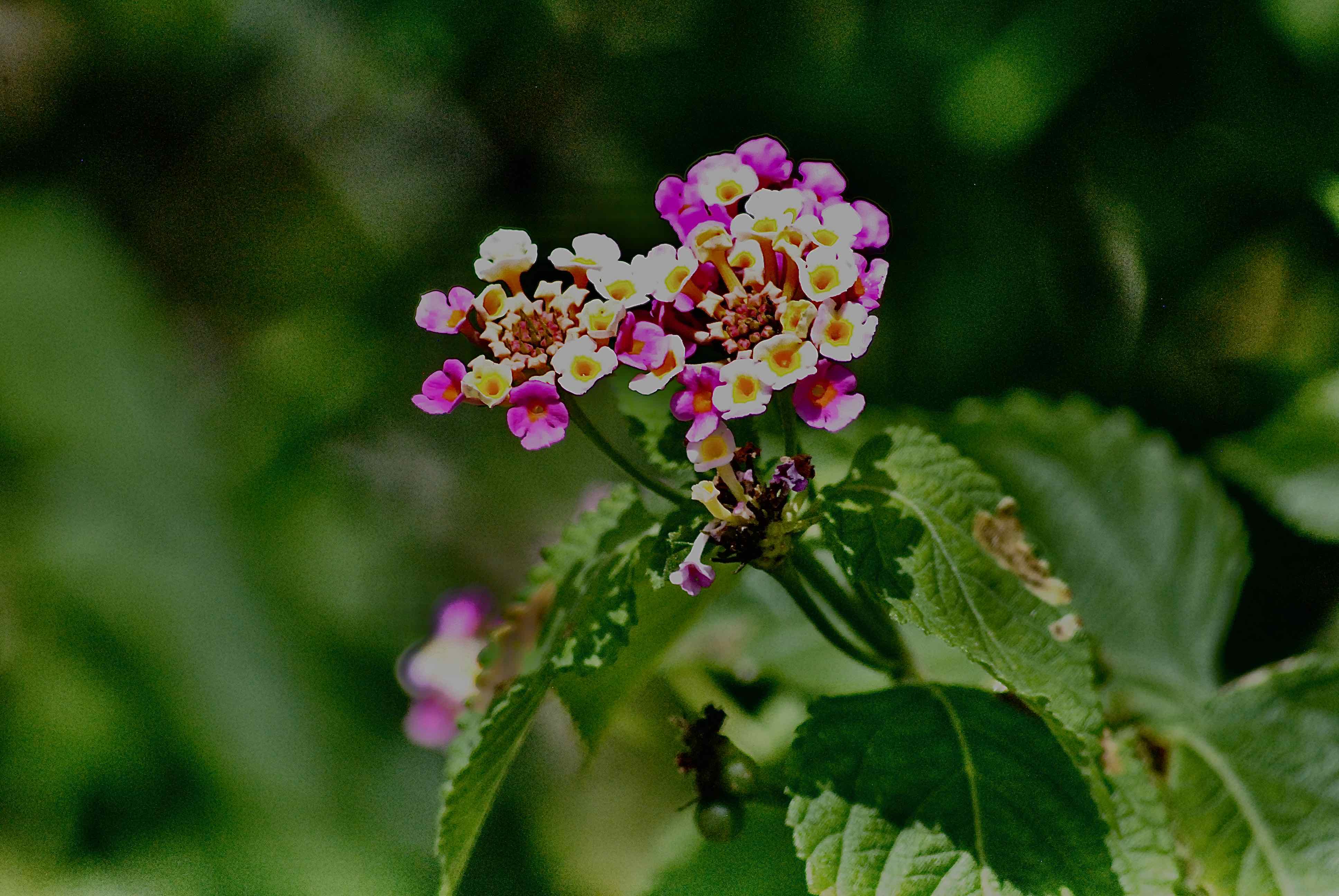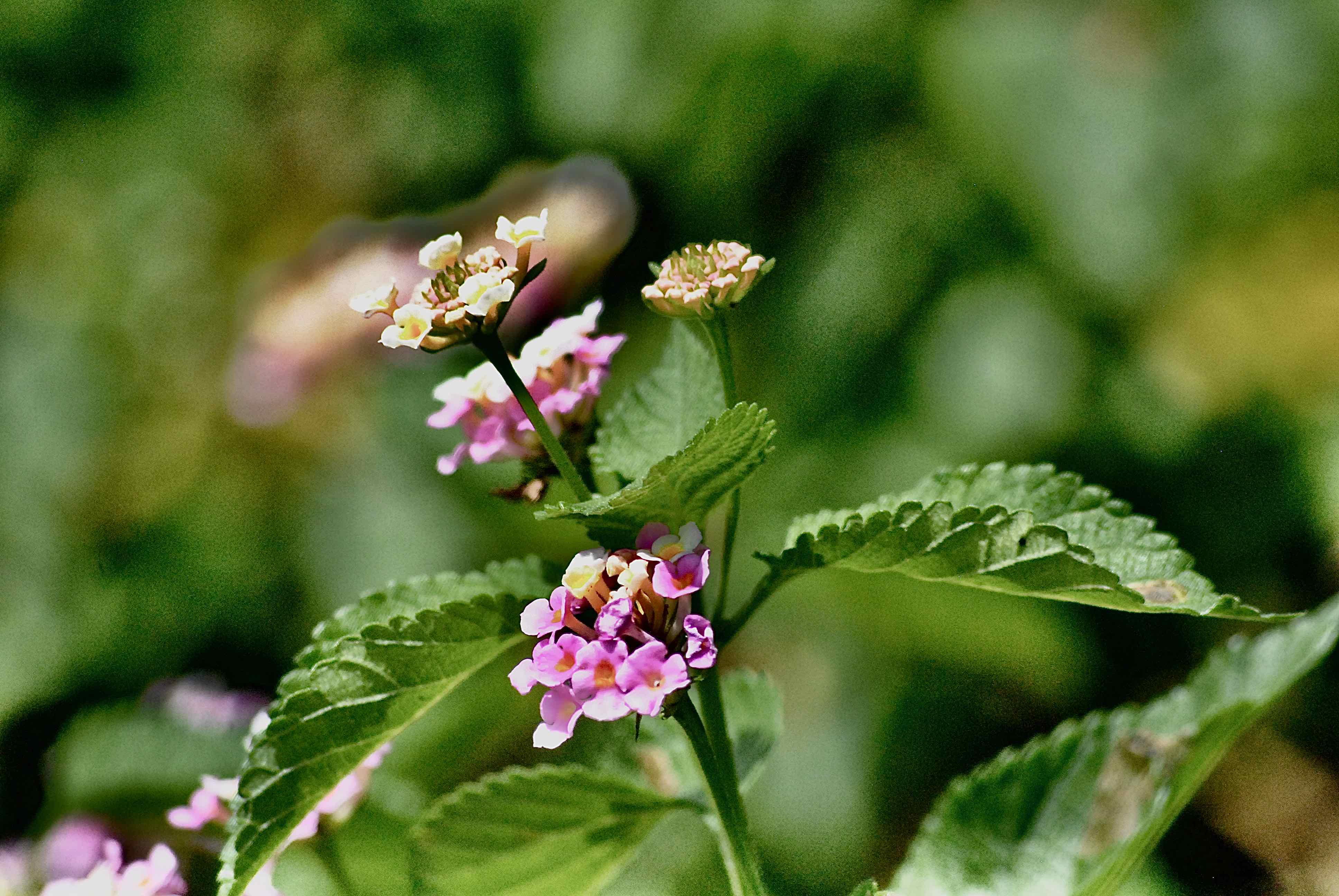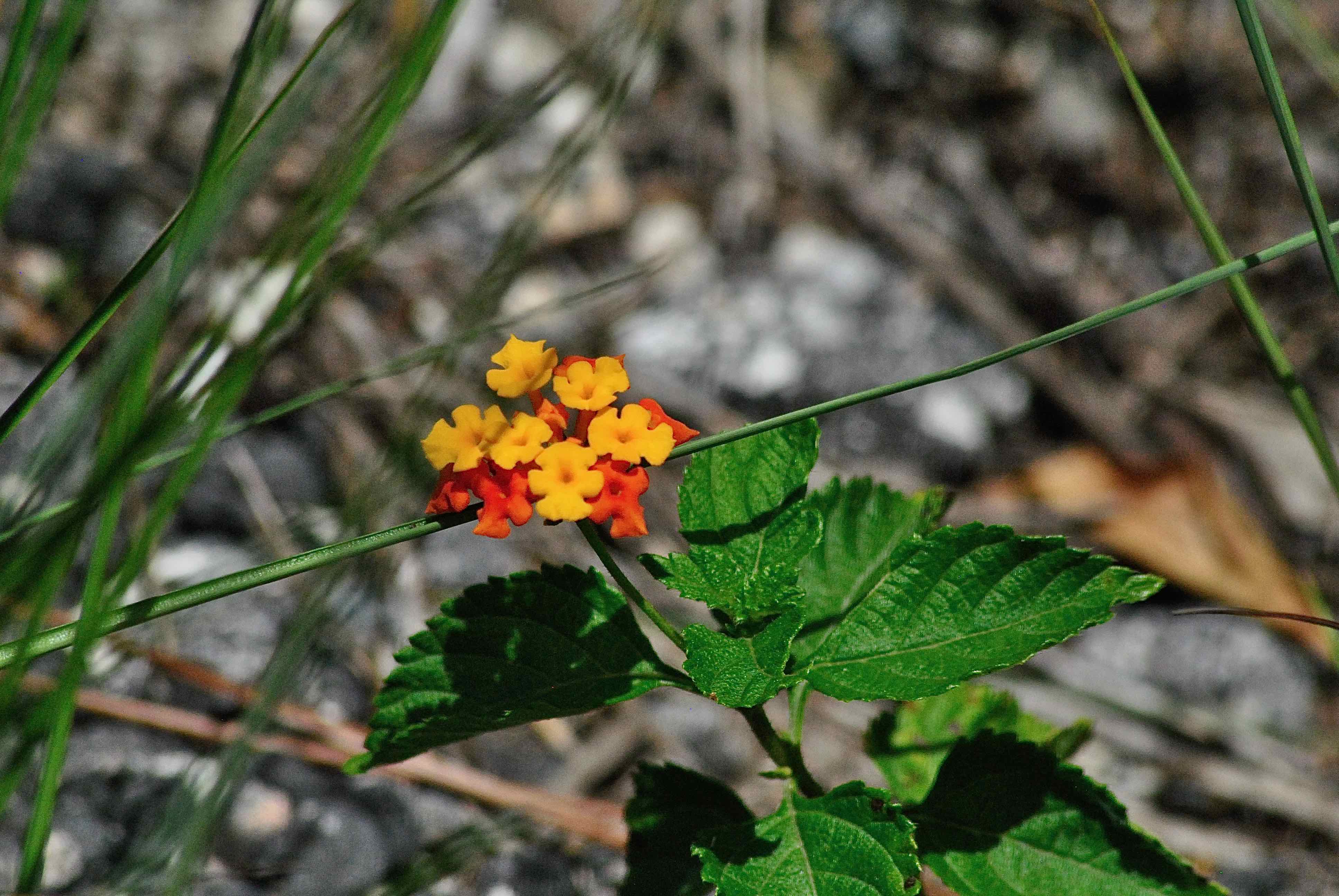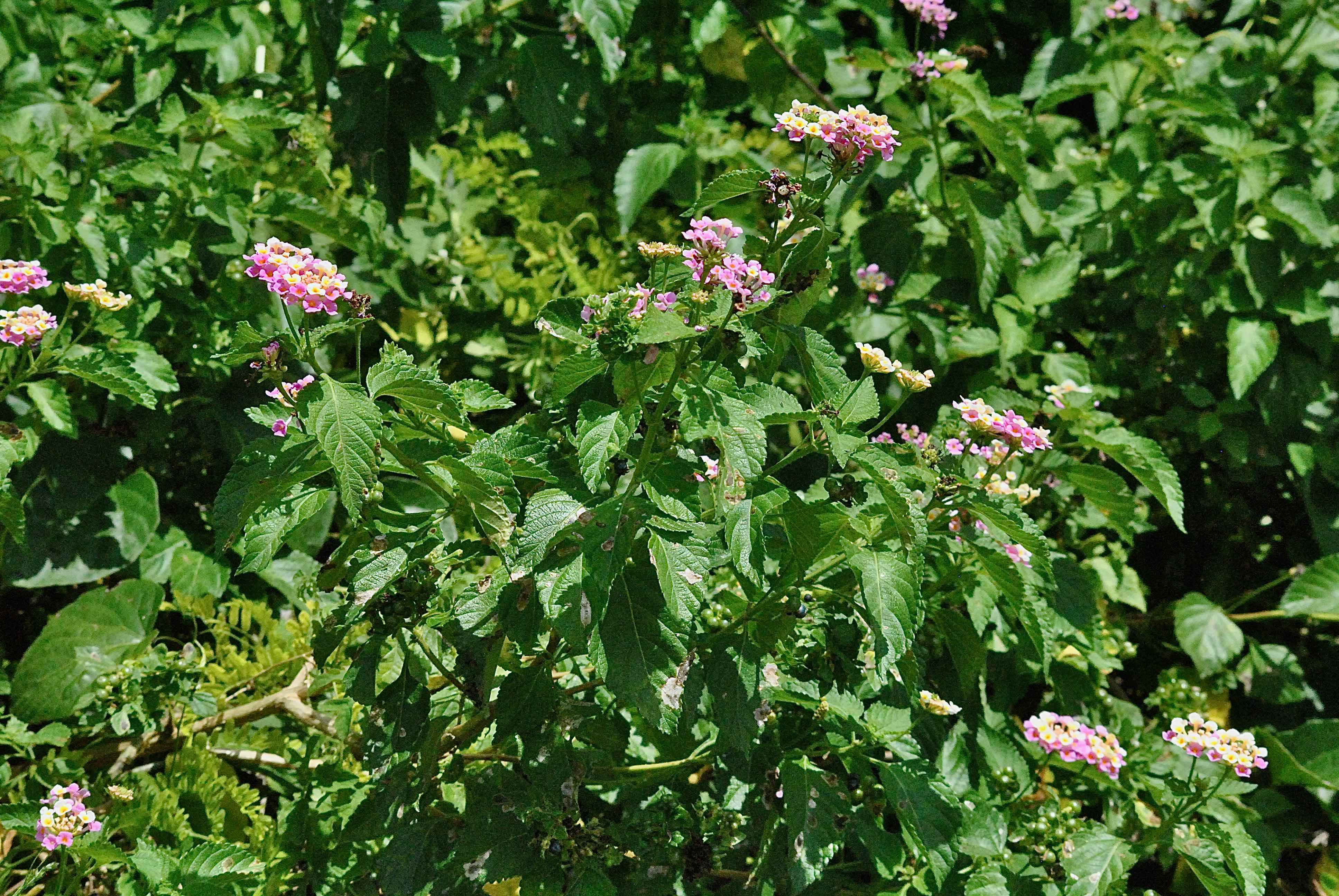
Lantana Camara, photographed at Lake Ida County Park, Delray Beach, Palm Beach County, in August 2014.
The beauty of lantana, Lantana camara, is undeniable, and it has made it a landscaping favorite for more than three centuries. That it's also a major environmental/agricultural pest in much of the world, including here in Florida, is also undeniable.
It's so bad that in certain West African countries you might find yourself in prison if caught growing it on your property. Really. It's so bad scientists and farmers worldwide have been trying to control lantana for at least a century, yet it continues to spread. It's so bad that even in Argentina, Barbados and Puerto Rico, all places where it is native, it is considered an invasive pest. It's so bad an Australian government official wrote a book on the subject.
The Florida Exotic Plant Pest Council lists lantana as a class I invasive, meaning it's spreading and damaging native habits in the state. (We'd call FLEPPC the plant police just for the alliteration, but its only power is education and moral suasion.) In Florida, lantana is especially damaging, because of its tendency to hybridize with native species, of which we have several. And despite the damage that it does, it's still legal to sell it commercially. (Its popularity in the domestic landscape complicates the use of biological controls to eliminate wild populations.)
Lantana has been a favorite since the 17th century, when Dutch explorers found it in Brazil and introduced it to the Netherlands. European growers began developing different varities and sending them out into the world. It was brought to Florida in the early 19th century, escaped cultivation and established itself in wild places throughout the state. It also grows wild throughout the Southeast, parts of the west, in Africa, Asia, Australia and the Pacific.
Lantana can vary greatly in appearance because of the numerous varieties developed — by one count as many as 650 — and its tendency to hybridize. The flowers bloom throughout the year. They are small but grow in clusters an inch or more in diameter, and range from white to lavender to pink or yellow to orange to red, darkening with age. Leaves are oval-shaped, rough to the touch, toothed along the edges and fragrant. It is shrubby, and grows to about six feet tall. It produces a small berry-like fruit called a drupe, which turns from green to reddish purple to blue-black when ripe. Ripe fruit is edible, but the green can be deadly. Small birds spread lantana by eating the fruit and pooping the seeds. It also spreads by sending out shoots.
Lantana produces so-called allelopathic chemicals in its roots and shoots that inhibit other plants from growing nearby. It can grow into massive thickets, blocking out native species. It can be so think that, as one author put it, even a mosquito couldn't make its way through it.
It's a problem for the citrus industry here in Florida. Lantana competes with trees for nutrients and and those allelopathic chemicals don't help. Lantana thickets can make it difficult to harvest fruit.
In cattle-growing regions, lantana is a deadly problem. The leaves are rich in alkaloids and poisonous to any livestock that might graze on it. On the other hand, it's ability to spread and form dense thickets blocks out native species and diminishes the amount of edible plants for cattle to eat. It's such a problem in West Africa that you don't want to be caught growing lantana on your property. If the authorities don't get you, your neighbors might.
Yet another problem: It tends to hybridize with native lantanas. It's invasive at the genetic level, essentially. Florida has several native lantanas, and one species, Lantana depressa, is especially vulnerable. The species has three varieties found in the state, all contaminated by Lantana camara, according to naturalist Roger Hammer. Lantana depressa is state-listed as endangered.
Part of the problem for us home landscapers is that the flowers of invasive lantana can look like the natives. If you want to plant lantana and avoid the invasive variety, check this out from the Miami Herald.
Lantana camara is a member of Verbenaceae, the verbena family. Other common names include shrubverbena and largeleaf lantana. It's also known scientifically as Lantana strigocamara.
Click on photo for larger image
U.S. Department of Agriculture Distribution Maps
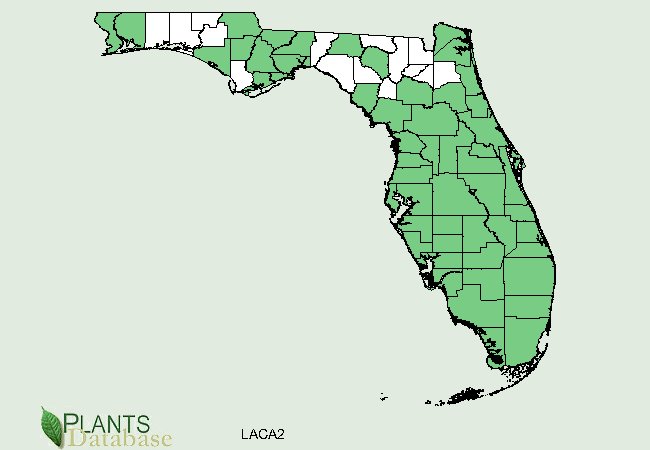

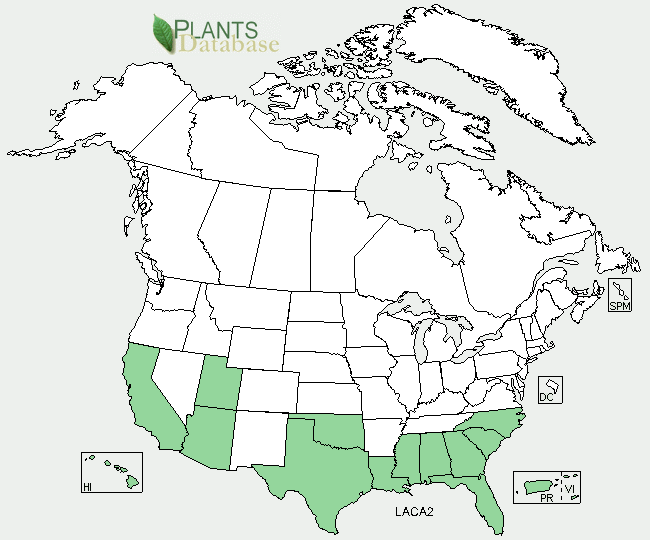
Links for Lantana Camara

